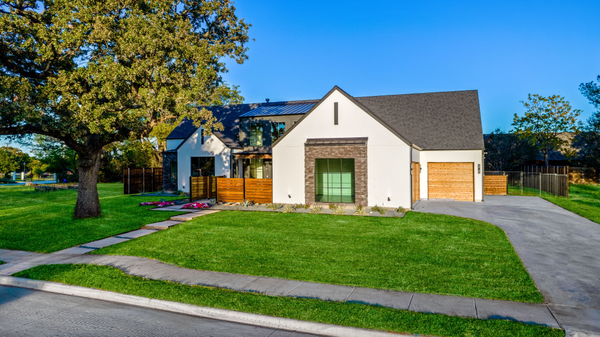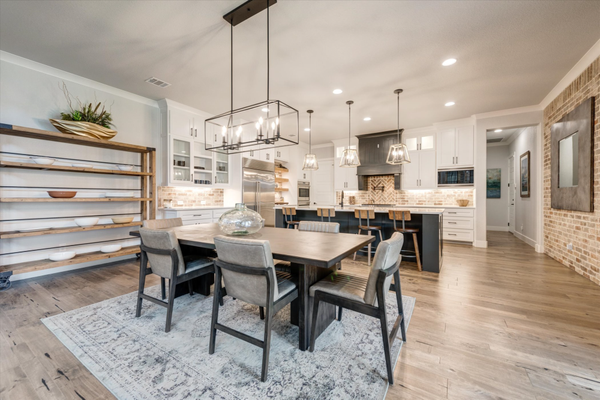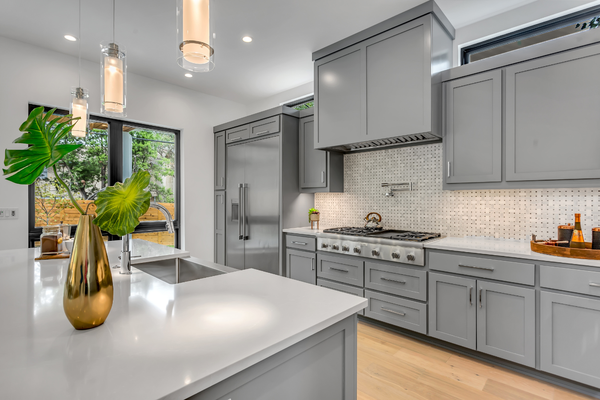
Are you the Next Joanna Gaines?
Anyone who watches HGTV is probably familiar with Chip and Joanna Gaines, the charming couple that heads up their own home renovation business and show. Joanna, the designer in this team, is known for her farmhouse style. And, as farmhouse style is all the rage right now, what better time to examine what it takes to create the farmhouse look you want in your home? So, here are some ways to incorporate elements of farmhouse style into your design.Everything Old Is New AgainThe old saying goes, “Use it up, wear it out. Make do or do without.” Farmers lived by that motto. To that end, it is no wonder that used, distressed, and vintage items are such important elements of farmhouse style. Antiques and vintage objects can be incorporated into your design scheme. Think of using practical items such as an antique quilt as a wall hanging or vintage dishes featured on wood shelves.Everyday RusticFarmhouse style is also defined by its simplicity. Your goal should be to make things look as uncomplicated as possible. Rustic elements are always welcome elements of farmhouse style. You might leave wooden beams exposed, use rough cut lumber in your mantle or shelving, or have a stone fireplace. You might use cast-iron cookware or incorporate wrought iron into your decor.Let Art Imitate LifeArtwork does not have to be vintage or rustic when you’re trying to achieve a rural look. Indeed, incorporating modern or popular art can bring an updated and contemporary flair to your farmhouse style. The only rules here are that your artwork should depict the natural world. That could be a landscape painting, an illustrated and framed page from a botanical, or a photograph of a cow. As long as there is some depiction of the natural world, the sky is the limit.LayoutFirst impressions are important. That’s why a big welcoming porch is so important in this design scheme. It not only provides a much-needed transition from indoors to outdoors, but it is also your home’s way of receiving family and guests with wide-open arms. A porch should provide comfortable seating for enjoying the view as well as small tables for holding drinks, reading materials, and projects such as knitting that one might want to work on outdoors. The farmhouse porch is a great place for visiting, relaxing, and getting things done.Another important layout feature of farmhouse design is a formal space for receiving guests that is separate from the less-formal living space where the family carries out everyday activities.Farmhouse KitchenThe kitchen is an important part of any home, especially of the farmhouse. Brushed and matte finishes — not glossy or shiny ones — should dominate this room. Painted cupboards and a big farmhouse sink suitable for washing vegetables, game, or even babies are things you are likely to find here. And, of course, no kitchen would be complete without one of the most important elements of farmhouse style: a generous rustic wood table where everyone can sit down to dinner together.Farmhouse style can be described as a kind of down-home chic. By incorporating elements of farmhouse style into your home, you can give it a comfortable charm that is both welcoming and lovely.Find Your FarmhouseAre you looking for your own Farmhouse Chic home? Let us show you what options are out there. Contact an agent today.Contact Us

Tips and Tricks For Moving Mountains (Or Your Family)
Whether you’re planning a move across town or across the country, the task of packing up your home and relocating can be daunting. Follow these four stress – free packing tips to ensure your move goes smoothly.Start EarlyBegin making arrangements at least two months before the move. Decide if you’ll make the move yourself—ideally with the help of some wonderful friends and family members—or use a moving company. If you opt to hire help, bear in mind that there are different types of moving services. Some companies will move your belongings from door to door, while others offer trucking services only. Begin researching your options at least eight weeks before your anticipated move, as movers get booked during peak moving times.Whether you’re planning a DIY move or using a professional mover, you’ll still need to pack everything. You can plan to pack your belongings yourself, or hire out the packing (talk about stress-free!). One of the most reliable and stress-free packing tips is to start early. Begin sorting and purging possessions. Go through each room and decide what to keep and what to sell or give away. Create a space in your house for a donation pile. If you have time to organize a yard sale or try to sell things online, designate another space for those items.Now is also the time to consider which items need special consideration during the move. Fragile objects and valuable keepsakes often require extra care when moving, so it’s a good idea to start making notes about these cherished possessions.Get OrganizedDesignate a method of keeping track of all relevant documents and information. Keep receipts, estimates, and an inventory of items in a box or a binder that can be accessed easily throughout the move. Measuring your furnishings before the move will make it easier to arrange your things in the new space. If you’re a fan of checklists, now is the time to make one.Acquire moving supplies well in advance. You can buy these supplies at shipping and storage facilities, and you may be able to get sturdy boxes for free from nearby stores.Pack WiselyStart by packing items that you use infrequently or that are out of season. Try to keep the same type of items together and clearly label the boxes. You also may want to number the boxes and create a corresponding list according to the destination in the new house. Set aside a box that contains essential items that you’ll need immediately upon arrival at your new home. Clearly identifying what you’ve packed is one of the easiest stress free packing tips. Also, keep some cleaning supplies handy for last-minute use.Change of AddressA month prior to moving, complete a change-of-address form for the postal service. You can do it online through the USPS website or at your local post office. Also make sure to notify important parties (banks, employers, utility providers, etc.) and companies that you have subscriptions with (magazines, food deliveries, etc.). That way, you won’t experience a lag in services.When moving day arrives, make sure to allow for breaks. Wear comfortable clothes and supportive shoes and get plenty of rest the night before so you can start out on the right foot in your new home. These stress free packing tips should ensure that you have the best experience possible.Organize Your MoveGet started with the packing process by using our moving organization checklist.See Checklist

Planning a Cross Country Move
Moving is exciting no matter what the distance, but a cross-country move comes with its own set of unique challenges and opportunities. With great planning and plenty of patience, your move can be smooth and less stressful. Here are some tips to help you prepare for your cross country move.Start with CleaningThe best way to make packing easier is to start with less stuff. Moving provides the perfect opportunity to go through your belongings and sell or donate the things you no longer need or use. You’ll be grateful while packing your boxes, and unpacking at your new home will go much faster if you have fewer items. Using sites like Craigslist or eBay may even let you make a little extra cash for gas money while you’re at it.Know What You’re PackingAfter you’ve pared down your belongings, you can get out the boxes and start packing. As you go, make an inventory of what you’re taking with you on your cross country move. Label each box with the room it belongs in, along with a number. Add the number of each box and its contents to your inventory. Knowing what you have and where it will go will make unpacking at your new home much faster and easier. Take photos of your belongings as you pack. They will be useful if something goes wrong—for instance, if anything gets damaged or lost during the move.RELATED: Moving Checklist: Organizing for your MoveDo Some ResearchDon’t trust your belongings to just anyone. Before filling a truck with your possessions to travel across the country, be sure you know who’ll be getting them to your destination. Take time to research moving companies. Make sure the company is licensed and insured. Read customer reviews to find out what kind of experiences others have had with the company and its employees. Take your time to make the best decision.Get InsuredWhen you choose a moving company, check out their options for moving insurance. While it’s great to be optimistic, there are plenty of chances for things to get broken, lost, or stolen during a cross country move. Give yourself peace of mind by choosing an insurance policy before the move.Take It SlowNo matter how prepared you are, a move is a stressful situation for everyone involved. Take your time when researching, packing, and preparing for your move. Take some breaks during the days leading up to the move. After you arrive at your new place, stay calm if your belongings don’t arrive right away. In the end, everything will work out.It’s easy to become overwhelmed when preparing for a big move. With our tips, you can save yourself some stress and get through the process of preparing for your next adventure.Find Your Forever HomeFinding a home in an unknown (to you) market can be difficult. Let us help do the heavy lifting of scouring the market. Contact Us
Categories
Recent Posts









